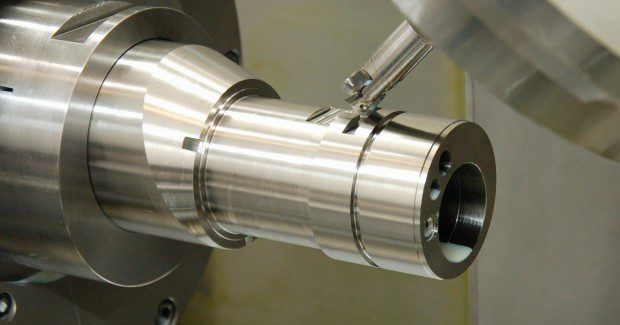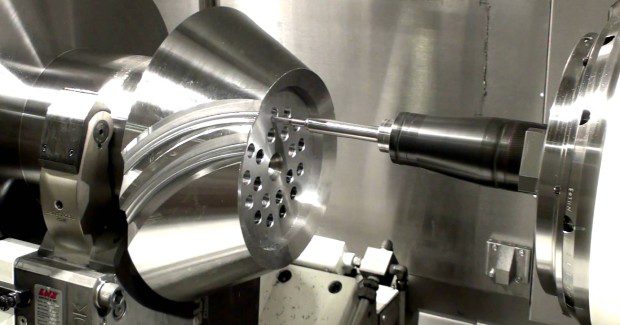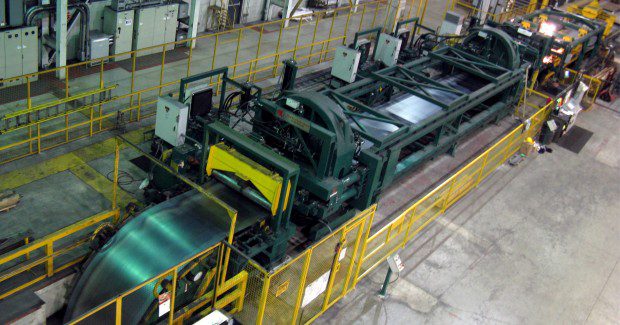Equipment Purchase Agreements: Pay Now Or Pay (More) Later
You should devote almost as much attention to documenting the deal as you did conducting the bid process to cover the many things that can go wrong in the time between making the down payment and final acceptance. Here’s why.
Posted: December 22, 2014
You are purchasing a new custom-designed machine tool that will be a significant production asset on your shop floor. You prepare the RFQ and provide it to the potential equipment suppliers, followed by extensive conversations to iron out the details of the specifications, delivery, installation, part run-off and acceptance testing. Finally, after much back and forth, you finalize the specifications, identify the vendor and agree upon the price. Whew! Done! Let’s roll.
But wait. You are not done. Instead, if you do the job right, you will devote almost as much attention and thought to documenting this deal as you did to conducting the bid process. The equipment purchase agreement is not just boilerplate. In the time between making the down payment and final acceptance, many things can and often do go wrong, and misunderstandings arise. Careful attention to the details of the contract before you sign it will ensure that when problems or conflict arise, you will be ready. Here are some important things to think about in documenting the purchase of a piece of custom manufacturing equipment.
HOW TO STRUCTURE PAYMENT OF THE PURCHASE PRICE?
All buyers want to hold back as much of the purchase price as possible, and all sellers want as much of the purchase price upfront as possible. This is a give and take, although a hold back of at least 10 percent or more until final acceptance occurs is advisable. Otherwise, if there are significant problems attaining final acceptance, the seller might determine that fixing the problems will cost more than the hold back and walk away.
Furthermore, payment installments should be tied to specific identifiable, measurable accomplishments in the manufacturing process, not time periods or dates. If payment installments are tied to time periods or dates instead of actual progress, even if manufacture of the equipment is severely behind schedule, the buyer will still have to make the payments.
FOREIGN CURRENCY OR NOT?
If the vendor is foreign, you will have to negotiate whether the price is in foreign currency or U.S. dollars. If you agree to foreign currency, you should consider entering into a hedge transaction so that you can lock in the current exchange rate. Otherwise, the equipment might end up costing significantly more than you budgeted if the exchange rate becomes less favorable between signing the agreement and payment of the purchase price. This is easy for a bank to arrange, and relatively inexpensive.
USE FINANCIAL INSTRUMENTS TO PROTECT AGAINST SUPPLIER FAILURE
If the vendor is in questionable financial condition, it is important that you obtain a “letter of credit” or “bank guarantee.” This is also very important with any foreign vendors, because legal pursuit of a foreign vendor in the event of breach is typically more time consuming and expensive than legal pursuit of a domestic one. Pursuant to a letter of credit or bank guarantee, the issuing bank agrees to pay to the buyer a sum of money under certain conditions.
In an equipment purchase situation, the letter of credit or bank guarantee would typically be equal in amount to the amount of all payments made by buyer to seller under the equipment purchase agreement, and could be drawn upon by buyer if the equipment is not received by a specified date, if final acceptance does not occur on a specified date, or if some other stated contingency does not occur.
The vendor can also be asked to provide an additional letter of credit or bank guarantee at the time that the equipment is received and accepted, to provide financial backing for the warranty or uptime guarantee. Note that issuance of a letter of credit or bank guarantee is typically inexpensive for the vendor. However, the vendor’s bank will deduct the maximum amount that can be drawn under a letter of credit or bank guarantee for purposes of determining availability under the vendor’s line of credit. Thus, it reduces the amount of credit available to the vendor.
WHAT IS THE “CONTRACT”?
Oftentimes an equipment purchase agreement consists of not just one document, but a collection of important documents. Frequently, the RFQ, the quotation and possibly other specifications or documents relevant to the transaction will form part of the contract. It is important that any documents that describe the rights and obligations of the parties with respect to the equipment purchase at hand be incorporated by reference and attached as exhibits to the agreement.
Furthermore, if any of these documents that are incorporated into the contract contradict each other, or contradict the words of the equipment purchase agreement, the equipment purchase agreement should be revised so that all the conflicts are clearly resolved. It is also important that the contract state which documents supersede the others in the event of a conflict among the documents that is not resolved.
FINAL ACCEPTANCE MUST BE CLEARLY DEFINED
Attaining final acceptance, and any interim acceptances, should require mutual written agreement upon successful completion of a clear set of performance criteria, including specified and measurable quality and production milestones. Final acceptance should never be deemed to occur based upon any time-based triggers (e.g., a certain number of days after delivery). Final acceptance must be triggered by a set of objective criteria that will establish whether operation of the manufacturing equipment in question is successful.
WARRANTIES
A buyer should obtain a warranty that the equipment and materials meet specifications set forth or referenced in the contract. A buyer should also ask that the seller warrant that the equipment is fit for the purpose intended (assuming that it was designed by the seller), and a warranty of merchantability and/or workmanship would be beneficial as well. If the equipment requires a significant foundation, it is best if the equipment manufacturer warrants both the equipment and foundation. Otherwise, in the event of any problems, the equipment manufacturer and foundation supplier might point fingers at each other rather than addressing the problem.
An uptime guarantee can also be helpful to ensure that the equipment is operating efficiently for a specified period after closing. In particular, an uptime guarantee sets forth a formula that compares actual operating time to scheduled operating time. If uptime does not meet or exceed specified percentages in the first year or two following final acceptance, then the equipment seller must pay a penalty or provide other agreed-upon consideration.
PROTECTING CONFIDENTIALITY AND INTELLECTUAL PROPERTY
Every company has confidential information (e.g., financial information about your business, strategic plans, customer specifications, pricing, etc.) to be protected. And just because a company does not have recorded patents or copyrights or registered trademarks does not mean that it does not have intellectual property. Intellectual property also includes “trade secrets,” which is generally defined as information or know how from which its holder derives economic value as a result of keeping it confidential.
Unique manufacturing processes are often protectable trade secrets. Because equipment vendors often gain access to a buyer’s confidential information or trade secrets in the process of manufacturing, installing and/or run off testing, it is important that the equipment purchase agreement include agreements of the vendor to maintain the secrecy of confidential information and/or trade secrets obtained from the buyer. Alternatively, the vendor could be required to sign a separate confidentiality agreement at the commencement of the relationship, which has the advantage of being in place at the start of discussions, before any sensitive information is conveyed.
INDEMNITY PROVISIONS
Did you ever worry that a vendor’s employees will get hurt on your premises and sue you? You should, because they can and they do! A vendor’s employee who gets hurt on premises owned by a third party is covered by the vendor’s worker’s compensation, but he or she is also limited by the cap that worker’s compensation places on damages. However, if the injured employee sues the third party facility owner, there is no cap.
Lawsuits like this happen all the time. Thus, many companies require vendors who access the company’s premises to sign an agreement that the vendor will indemnify (take full legal responsibility for) any personal injury or property damage that results from the activities of the vendor’s employees on the premises. If this indemnification is properly worded and executed by the vendor, it can be used to, among other things, transfer any legal fees and liability associated with an injury suffered by a vendor’s employee on buyer’s premises to the vendor.
If the vendor will be on the buyer’s premises, then it is important to include such a clause in the equipment purchase agreement. State laws – called “anti-indemnity statutes” – can limit the permissible scope of a written indemnity clause, so this language must be carefully drafted so that it is compliant with applicable law.
OWNERSHIP OF MACHINE TOOL DESIGN
If you have commissioned a truly unique machine tool, you should address the respective intellectual property rights to the design in writing. A buyer will want to own all rights to unique machine tools, particularly if the buyer has paid for the design engineering. Of course, sellers want to “cash in” on any successful new design by selling the machine tool (or a variant) to others, typically the buyer’s competitors. One resolution would be to allow the seller to own the design and use it for other customers, but only after a specified number of years (to allow exclusive use to the original buyer for an agreed period of time). It is important to think the intellectual property issues through carefully to avoid surprises and disputes down the road.
DAMAGES AND RIGHTS FOR NON-PERFORMANCE?
A contract could spell out all the different ways that a breach will occur, and the remedies for breach, or it could be silent. Silence does not mean that the buyer cannot make a claim for damages resulting from breach, but often the parties wish to agree in writing in the contract on a process for determining if a breach has occurred, and specify the remedies for breach.
For example, one common remedy is the right for the buyer to terminate the agreement and receive back all money paid in the event that the equipment is not received by a specified date, or if final acceptance does not occur by a certain date. It is also quite common to agree that neither party may collect consequential damages (the largest of which is typically lost profits) in the event of a breach by the other party.
While this request is often viewed on both sides as reasonable, it is important for the buyer to understand what this means in the event of a breach. It means that, even if the equipment vendor has significantly delayed buyer’s production due to vendor’s breach, buyer may not claim the profits it would have earned if vendor had not breached. Lost profits can be a big number and buyers should understand the implications of this concession before making it.
CHOICE OF LAW/FORUM
Most equipment purchase agreements include a choice of law provision. This avoids the expense and uncertainty of arguing about the issue if disputes arise. While legal practitioners have preferences in this regard, the law of most U.S. states is often acceptable. More problematic are equipment purchase agreements that are governed by foreign law. Foreign law is not necessarily worse for a buyer, but the problem is that a buyer can’t know for sure without getting advice from a lawyer who is licensed to practice in the foreign jurisdiction in question, which adds cost and time to the negotiation process.
Agreements will often either specify a location where any litigation that arises under the agreement must occur, or specify that disputes must be arbitrated under procedures set out in the agreement. Whatever your dispute resolution preference, do not forget to address this topic in the agreement to avoid legal skirmishes later over such procedural matters.
Prudent analysis and negotiation of the issues set forth above will be for naught if the final agreement that is signed is not written clearly (including both “commercial” and “legal” provisions). The question is not whether the employees on both sides handling the purchase understand the agreement (because all could be gone by the time a dispute arises) – the question is, instead, whether the agreement could be understood by an uninvolved third party. If not, keep working until the agreement is clear. If any dispute arises, you will be glad that you took the time to be careful.


















